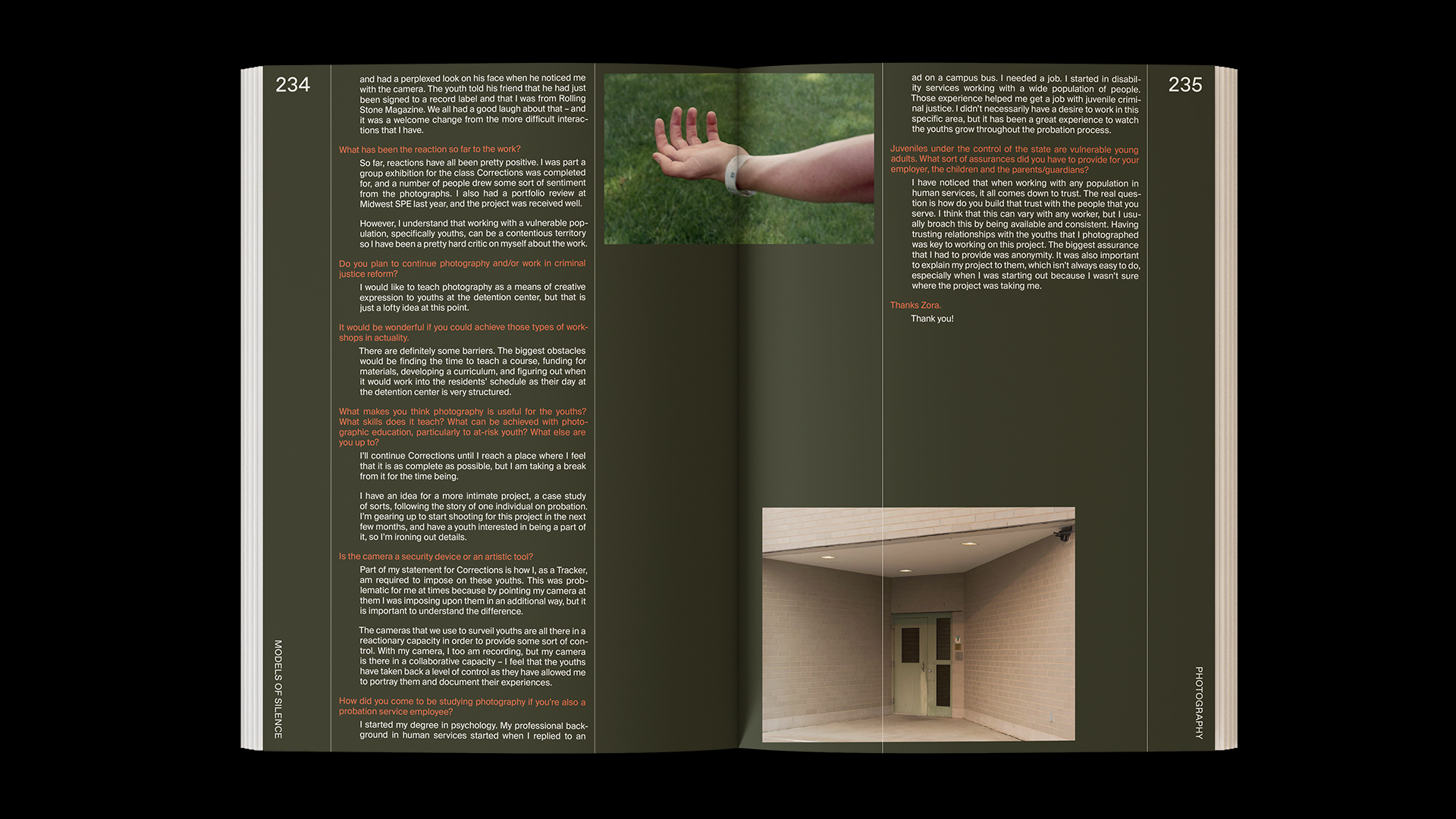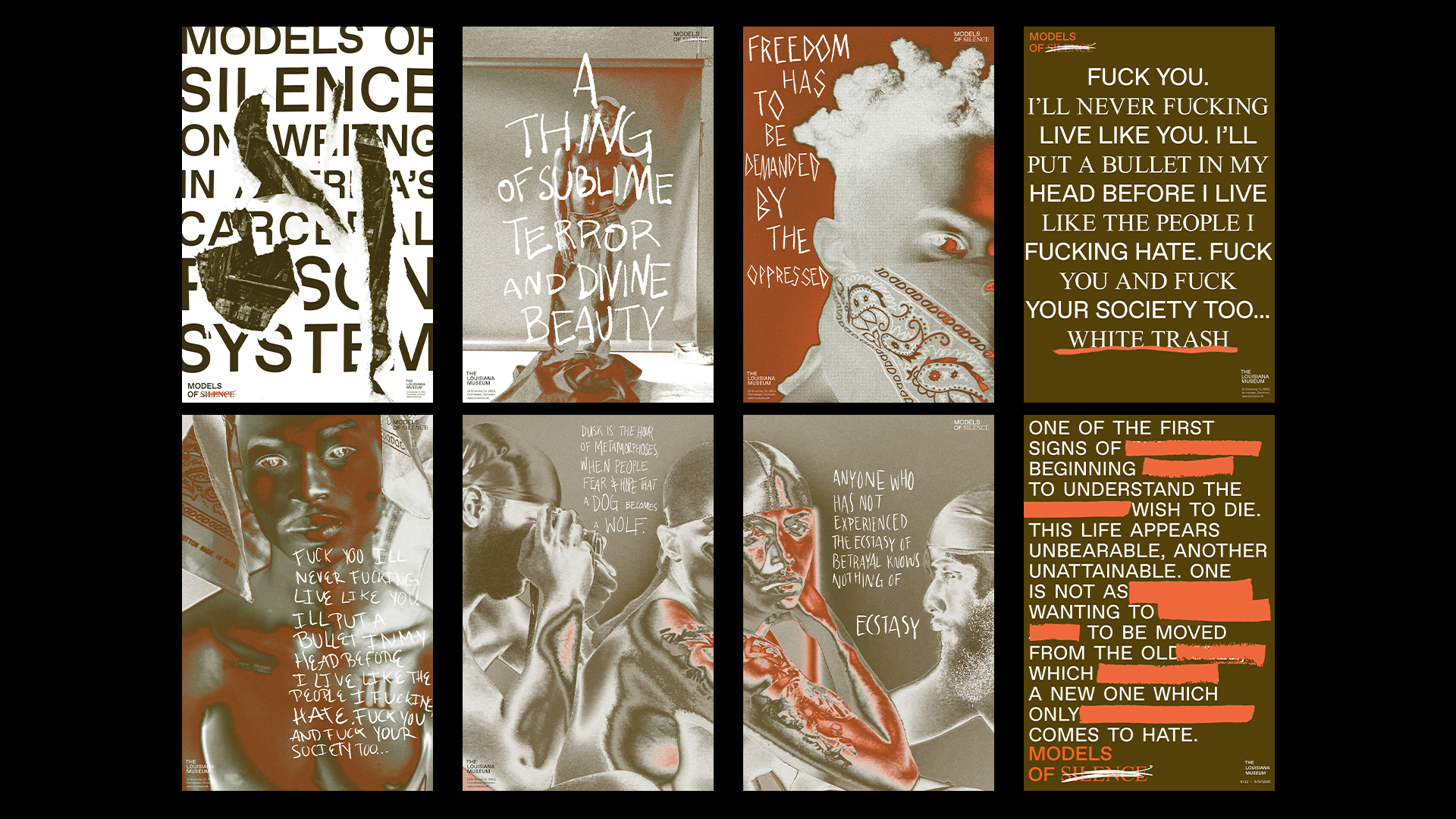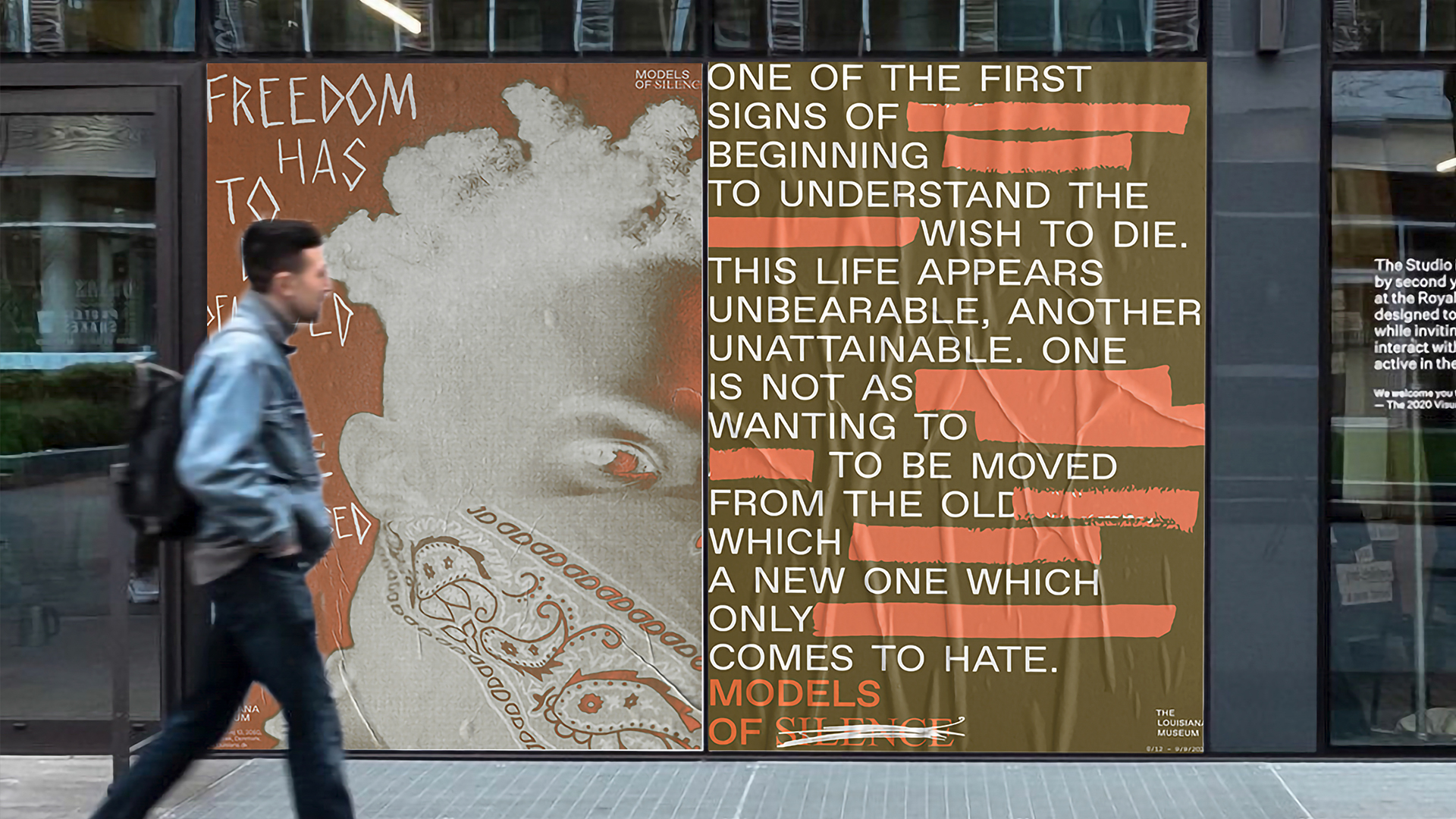
Models of Silence
Book & Exhibition DesignPrint & Transmedia
2020
Mentors: Cheri Gray, Angad Singh
Mentors: Cheri Gray, Angad Singh
Recognition:
Type Director’s Club 67
Communication Arts Typography Award 2021
Graphis New Talent Annual 2021 – Silver
Type Director’s Club 67
Communication Arts Typography Award 2021
Graphis New Talent Annual 2021 – Silver
At the beginning of the summer of 2020 we we’re faced with the dual crises of the COVID-19 Pandemic and the societal upheaval following the murder of George Floyd. Feeling restless and galvanized, I wanted to explore one of the many intersections of these two crises: the silencing, and dehumanization of incarcerated people in the American Prison System.
Models of Silence is an experimental typography project that posits a hypothetical exhibition on prison writing as genre. The project explores how isolation, and hidden voices within prisons can be amplified by visibility, and regarding the forms of writing within prisons as literary works.
The project includes a 300 page exhibition catalogue and anthology of work, as well as a virtual gallery space and exhibit identity for the Louisiana Museum of Modern Art.
Models of Silence is an experimental typography project that posits a hypothetical exhibition on prison writing as genre. The project explores how isolation, and hidden voices within prisons can be amplified by visibility, and regarding the forms of writing within prisons as literary works.
The project includes a 300 page exhibition catalogue and anthology of work, as well as a virtual gallery space and exhibit identity for the Louisiana Museum of Modern Art.
Virtual Gallery
Models of Silence culminates in a virtual exhibition where users can interact with the exhibit in a digital space that mimics the environment of a prison.





Anthology Book
The Models of Silence book is an anthology of prison writing. Contents range from letters, ephemera, graffiti, photos, drawings, and clothing.
The book was an opportunity to experiment with typographic forms, handwriting, and printing techniques. Each of these experiments were reference to the writing in prisons, meant to amplify the voices of prionsers.



The slipcase uses uses ripped paper to conceal and hide the words on the cover. Its only until it is removed that the writing is revealed.






Large typographic forms reference the imposing, brutalist structures of prisons.


Negative space, and justified blocks of text mimic the isolation of imprisonment.


Rules constraining text, and bisecting images is a reference to bars, and the containment of prisoners.
Poster Series
The poster series are a mix of two directions: typographic annotations, and grafitti. The typography-driven direction uses annotations, censorship, and torn paper to interrupt and obscure the typography, both amplifying and silencing the messaging.
The graffiti direction annotates duotoned images of prisoners with their quotes. Elevating graffiti to a literary form in and of itself.




